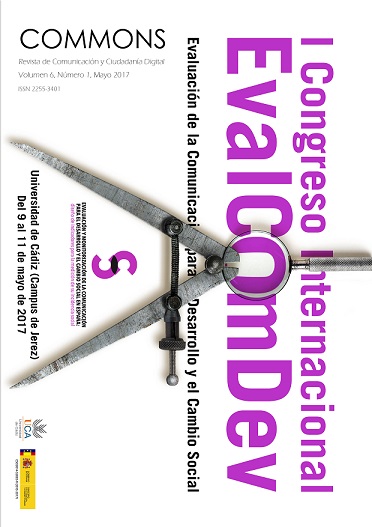COMMUNICATION FOR DEVELOPMENT AND SOCIAL CHANGE: INFLUENCING SOCIAL NORMS FOR AN INCLUSIVE SOCIETY IN MONTENEGRO

Información
Resumen
UNICEF and the Government of Montenegro implemented a communication strategy “It’s about ability” to challenge the existing, exclusionary practices and promote new, inclusive social norms for children with disability. Drawing on communication for development principles and social norms theory, a 2010-2013 nation-wide campaign mobilized disability rights NGOs, parents associations, media and private sector to stimulate inclusive attitudes and practices towards children with disabilities. As a result, the percentage of citizens who find it acceptable for a child with disability to attend the same class with theirs increased from 35 before the campaign to 80 percent at the end of it. Similarly, the percentage of Montenegrin citizens who find it acceptable for a child with disability to be the best friend of their child increased from 22 before the campaign to 51 percent at the end of it. The campaign was participatory, audience-centred and guided by the key communication planning principles.
Palabras clave
Descargas
Agencias de apoyo
Cómo citar
Licencia
Aquellos autores/as que tengan publicaciones con esta revista, aceptan los términos siguientes:
- Los autores/as conservarán sus derechos de autor y garantizarán a la revista el derecho de primera publicación de su obra, el cual estará simultáneamente sujeto a la Licencia de reconocimiento de Creative Commons 3.0, que permite a terceros compartir la obra siempre que se indique su autor y su primera publicación esta revista.
- Los autores/as podrán adoptar otros acuerdos de licencia no exclusiva de distribución de la versión de la obra publicada (p. ej.: depositarla en un archivo telemático institucional o publicarla en un volumen monográfico) siempre que se indique la publicación inicial en esta revista.
- Se permite y recomienda a los autores/as difundir su obra a través de Internet (p. ej.: en archivos telemáticos institucionales o en su página web) antes y durante el proceso de envío, lo cual puede producir intercambios interesantes y aumentar las citas de la obra publicada. (Véase El efecto del acceso abierto).
Citas
Bessette, G. (2004) Involving the Community. Ottawa and Singapore: IDRC and Southbound.
Bicchieri, C. (2006) The Grammar of Society: The Nature and Dynamics of Social
Norms. Cambridge: Cambridge University Press.
Fraser, C. and Restrepo-Estrada, S. (1998) Communicating for Development: Human Change for Survival. London and New York: I.B. Taurus.
Hemer, Oscar and Thomas Tufte (eds.) Media and Glocal Change. Rethinking Communication for Development. Buenos Aires, Göteborg: CLACSO/Nordicom. Available at: http:bibliotecavirtual.clacso.org.ar/ar/libros/edicion/media/media.html
Kincaid, L (2012). Methods of Social Norms Measurement: Identifying Norms, Communication and Norms, Presented at the Social Norms Measurement Conference, U of California-San Diego Center on Global Justice / UNICEF, San Diego, CA USA, November 9 and 10.
Maulik PK, Darmstadt GL. (2007) Childhood disability in low- and middle-income countries: overview of screening, prevention, services, legislation, and epidemiology. Pediatrics, 2007,120:Suppl 1S1-S55. doi:10.1542/peds.2007-0043B PMID:17603094
McKee, N., Becker-Benton, A. and Bockh, E. (2014) Social and Behavior Change Communication. In: Wilkins, K. G., Tufte, T. and Obregon, R. (eds) The Handbook of Development Communication and Social Change. West Sussex (UK): John Wiley & Sons, Inc.
Puggelli, F. R. and Sobrero, R. (2010) La communicazione sociale. Roma: Carocci.
Quarry, W. and Ramirez, R. (2009) Communication for Another Development: Listening Before Telling. London: Zed Books.
Servaes, J. (ed.) (2002) Approaches to Development: Studies on Communication for Development. New York: UNESCO.
Statistical Office of Montenegro (MONSTAT) (2014) 2013 Montenegro Multiple Indicator Cluster Survey, Key Findings. Podgorica, Montenegro: MONSTAT. https://app.box.com/s/sbf4rsd9d0hwzd7b15vl
Tacchi, J. and Waisbord, S. (2015) Beyond the Impasse. Exploring New Thinking in
Communication & Social Change. In: Thomas, P. N. (eds). Beyond the Impasse: Exploring new thinking in communication for social change. Nordicom Review 36 Special Issue, pp. 97-110.
Tacchi, J. and Lennie, J. (2014) A Participatory Framework for Researching and Evaluating Communication for Development and Social Change. In: Wilkins, K. G., Tufte, T. and Obregon, R. (eds) The Handbook of Development Communication and Social Change. West Sussex (UK): John Wiley & Sons, Inc.
UNICEF (2013) The State of the World’s Children 2013. Children with Disabilities. http://www.unicef.org/sowc2013/
UNICEF (2013a) Children and Young People with Disabilities Factsheet. http://www.unicef.org/disabilities/files/Factsheet_A5__Web_NEW.pdf
Waisbord, S. (2005) Five key ideas: coincidences and challenges in development communication. In: Hemer, Oscar and Thomas Tufte (eds.) Media and Glocal Change. Rethinking Communication for Development. Buenos Aires, Göteborg: CLACSO/Nordicom. Available at: http:bibliotecavirtual.clacso.org.ar/ar/libros/edicion/media/media.html
Waisbord, S. (2014) The Strategic Politics of Participatory Communication. In: Wilkins, K. G., Tufte, T. and Obregon, R. (eds) The Handbook of Development Communication and Social Change. West Sussex (UK): John Wiley & Sons, Inc.
Statistical Office of Montenegro (MONSTAT) (2014) 2013 Montenegro Multiple Indicator Cluster
Wilkins, K. G., Tufte, T. and Obregon, R. (eds) (2014) The Handbook of Development Communication and Social Change. West Sussex (UK): John Wiley & Sons, Inc.


